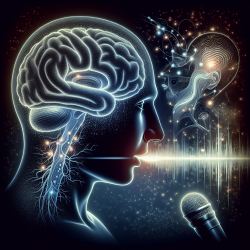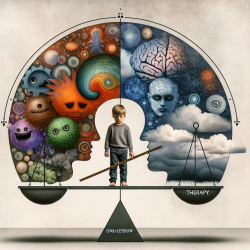Introduction
Essential Vocal Tremor (EVT) is a challenging condition that affects up to 40% of individuals with essential tremor, significantly impacting their quality of life. Traditional treatments have often fallen short in providing long-term relief. However, recent research highlights Deep Brain Stimulation (DBS) as a novel and promising therapeutic target for EVT.
Understanding the Role of DBS in EVT
DBS has been recognized for its efficacy in treating various tremor disorders, including EVT. The procedure involves the implantation of electrodes in specific brain regions, such as the ventral intermediate nucleus (VIM) of the thalamus, to modulate abnormal neural activity. This technique has shown promise in reducing tremor severity, offering a potential breakthrough for patients unresponsive to conventional therapies.
Clinical Evidence and Outcomes
The study titled Vocal Tremor: Novel Therapeutic Target for Deep Brain Stimulation outlines a multidisciplinary approach to DBS for EVT. The research emphasizes the importance of a comprehensive preoperative evaluation, involving both an otolaryngologist and a speech-language pathologist, to establish a baseline for measuring postoperative changes.
Key findings from the study include:
- Significant reduction in vocal tremor symptoms in patients undergoing DBS.
- Improved voice quality and decreased frequency modulation.
- Enhanced patient comfort and accuracy with the use of frameless DBS systems.
Implications for Practitioners
For speech-language pathologists and other practitioners, the implications of these findings are profound. Incorporating DBS into treatment plans for EVT could lead to improved patient outcomes. Practitioners are encouraged to stay informed about the latest DBS techniques and consider multidisciplinary collaborations for comprehensive patient care.
Encouraging Further Research
While the current evidence is promising, further research is needed to optimize DBS parameters and identify the most effective electrode targets. Larger cohort studies with long-term follow-ups are essential to validate these findings and refine treatment protocols.
Practitioners are urged to contribute to this growing body of research by documenting patient outcomes and sharing insights from clinical experiences. This collective effort will help shape future therapies for EVT and enhance the quality of life for affected individuals.
Conclusion
Deep Brain Stimulation offers a promising avenue for treating Essential Vocal Tremor, providing hope for patients who have struggled with limited treatment options. As the field continues to evolve, practitioners play a crucial role in advancing research and improving therapeutic strategies.
To read the original research paper, please follow this link: Vocal Tremor: Novel Therapeutic Target for Deep Brain Stimulation.










